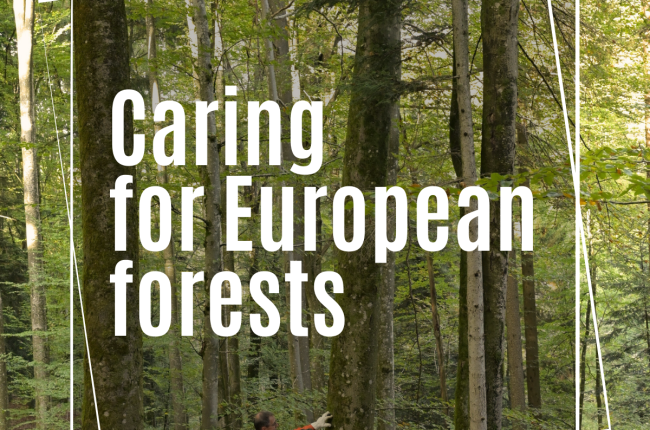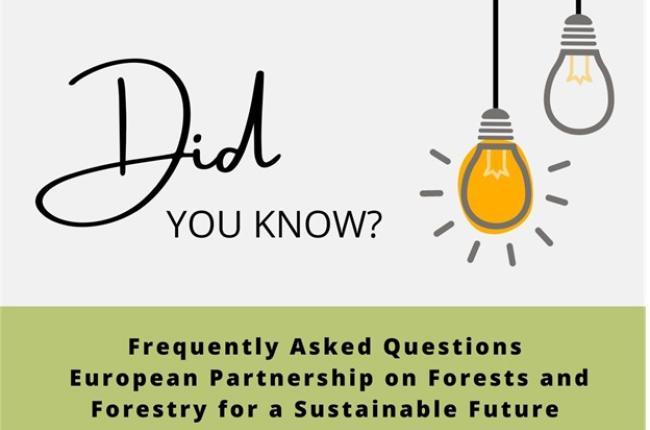1. Sustainable Forest Management: a reliable, flexible, and dynamic concept
According to the Helsinki resolution1, Sustainable Forest Management (SFM) is: “the stewardship and use of forests and forest lands in a way, and at a rate, that maintains their biodiversity, productivity, regeneration capacity, vitality and their potential to fulfil, now and in the future, relevant ecological, economic and social functions, at local, national, and global levels, and that does not cause damage to other ecosystems”.
As History unfolded and changed the European continent, so did specific forest management practices. Europeans have shaped their forests for centuries while living with and from forests and wood. Whereas European forest owners and managers have adapted their specific forest management practices based on the principles of sustainable forest management (SFM), striving to sustainably provide all relevant ecological, economic, and social functions in a balanced and locally adapted manner while taking into account local, ecological, and site characteristics.
Beyond forest biodiversity, forests and their management provide a wide array of services. They range from wood-based materials for construction, bioenergy, or diverse high technology applications, to protective functions in mountainous areas, including climate cooling effects near settlements.
Endorsing a pan-European definition of SFM does not mean remaining static and ignoring current and future challenges. On the contrary, it means that European forest owners and managers, as they have always done, will continue to adapt, learn, and innovate as they work with nature in a changing climate. The work to enhance the resilience of European forests and respond to societal expectations must thus take place under a dynamic framework of SFM.
2. Current pathways to keep the potential of forest biodiversity unlocked
European forests provide a home for thousands of birds, mammals, insects, and plant species. However, European forests are facing rapid unprecedented changes in their ecological and site characteristics due to changing climatic conditions and the increasing spread of pests and diseases. All core components of resilient forest ecosystems, including forest biodiversity, are increasingly being put under stress.
And yet, forest ecosystems are currently still one of the most biodiverse land ecosystems in Europe. The latest Forest Europe report shows positive trends for most biodiversity-related indicators for European forests and, according to the reporting of the Habitats Directive, half of Annex I forest habitat areas, i.e. habitats with high conservation needs, are in good condition. This is the result of long-term active SFM carried out by generations of foresters, men and women, who daily tend Europe’s forests.
Forest management is inherently a long-term endeavour but, as a result of climate change, management decisions are not easy or straight forward to make, whether due to e.g. a lack or overabundance of water, heatwaves leading to fire or drought, or intense storms. Decisions on how to make forests more resilient in the face of volatile future climatic conditions means the way ahead is full of uncertainties.
Therefore, when considering future climate change projections and the ever more common biotic and abiotic events which negatively affect forests, increasingly restrictive measures, such as large-scale strict protection, are high-risk solutions. On the contrary, what forest owners and managers need in order to make forests more resilient are enabling conditions that are locally suited.
3. Enabling conditions for the enhancement of the sustainability of forests and forest biodiversity
Forest management is per nature long-term; given climate change, it will always be uncertain what the best management decision is. A dynamic approach to nature conservation as part of SFM is key to successful biodiversity conservation, including through the enhancement of forest health and resilience. The approach should focus on well-defined conservation objectives, which are based on scientifically verified data on the ground.
All pan-European, EU and national forest-related policies need to promote a dynamic approach to nature conservation as part of SFM. This will require:
- effective technical, scientific and policy cooperation, leading to an improved implementation of existing policies on already-designated sites;
- the promotion of voluntary approaches to foster increased biodiversity conservation;
- improved knowledge of the scope and scale of climate change impacts on European forests and their biodiversity, and education on ways to tackle, prevent and better adapt forests to these changes;
- effective financial means, provided by economically viable forest management itself or external sources.
The active involvement of forest owners and managers is indispensable in order to allow forest biodiversity to thrive.
Europe can rely on its remarkable forestry sector to be part of the solution to keeping unlocked , maintaining, and enhancing forest biodiversity. European forest owners and managers are, and always have been, strongly committed to actively pursuing and sustainably managing Europe’s forests to provide a viable home for biodiversity for current and future generations.
1Helsinki Resolution - General Guidelines for the Sustainable Management of Forests in Europe, 1993 https://foresteurope.org/wp-content/uploads/2022/01/MC_helsinki_resolutionH1.pdf
Signatories:
CEPF – Confederation of European Forest Owners
Copa-Cogeca – European Farmers and Agri-Cooperatives
ELO – European Landowners’ Organization
EUSTAFOR – European State Forest Association
FECOF - European Federation of Forest-Owning Communities
Pro Silva – European federation of foresters for PRO SILVA management
UEF – Union of European Foresters
USSE – Union of Foresters of Southern Europe




